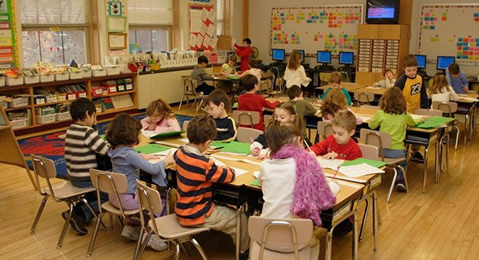 |
||||||||||||||||||
 |
||||||||||||||||||
New construction costs nearly twice as much as renovations/additions Between October 2003 and December 2008,
the All renovated school buildings must be brought up to code and will have the same life expectancy of a new school. The average cost, per square foot, of new schools is nearly twice the cost of renovations and additions, if all project costs are considered. New Schools: $204.10 sq. ft. |
Small Schools Except in a few big cities, neighborhood schools are usually small schools. Not only do neighborhood schools serve as community anchors, research shows they are an ideal learning environment. As educational reformer Deborah Meier writes, “Every child is entitled to be in a school small enough so he or she can be known by name to every faculty member and well known by at least a few of them, a school so small that family can come in and see the responsible adults, and the responsible adults can easily and quickly see each other.” The National Association of Elementary School Principals surveyed its members and found 47 percent felt the ideal school would have 300 to 500 pupils, and 37 percent felt it should have less than 300 pupils. The National Association of Secondary School Principals, in its landmark report, “Breaking Ranks,” suggests that high schools should be broken into schools or “schools-within-a-school” of no more than 600 students. Studies show:
The wider the range of grade levels in a school, the smaller and more valuable to the neighborhood it becomes. For example, a K-5 school with 400 students functions like a much smaller school than a building with 400 students in just grades 4 and 5, because the K-5 school gives parents, pupils, and teachers six years to know each other as individuals instead of just two. One of best summaries of the literature, “The Hobbit Effect: Why Small Works in Public Schools,” can be downloaded from the Rural School and Community Trust by clicking here.
|
|||||||||||||||||||||||||||||||||||||||||||||||||||||||


